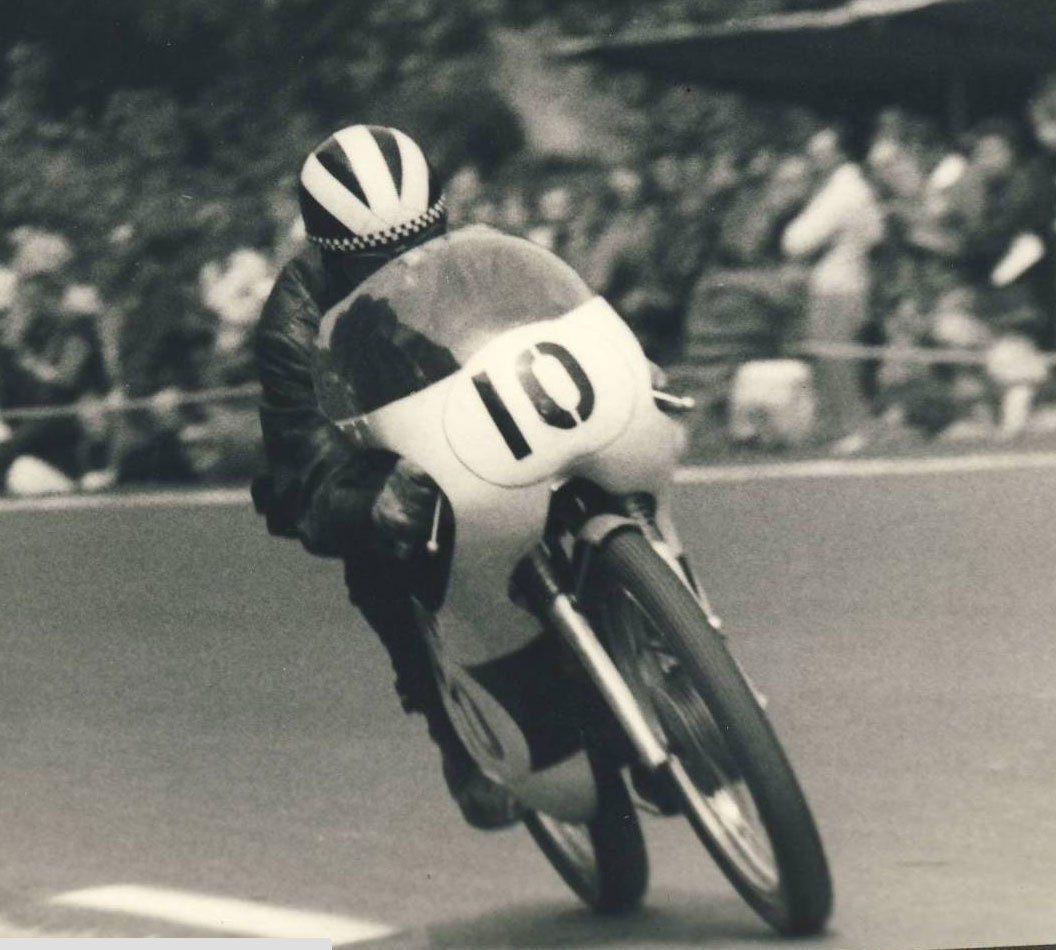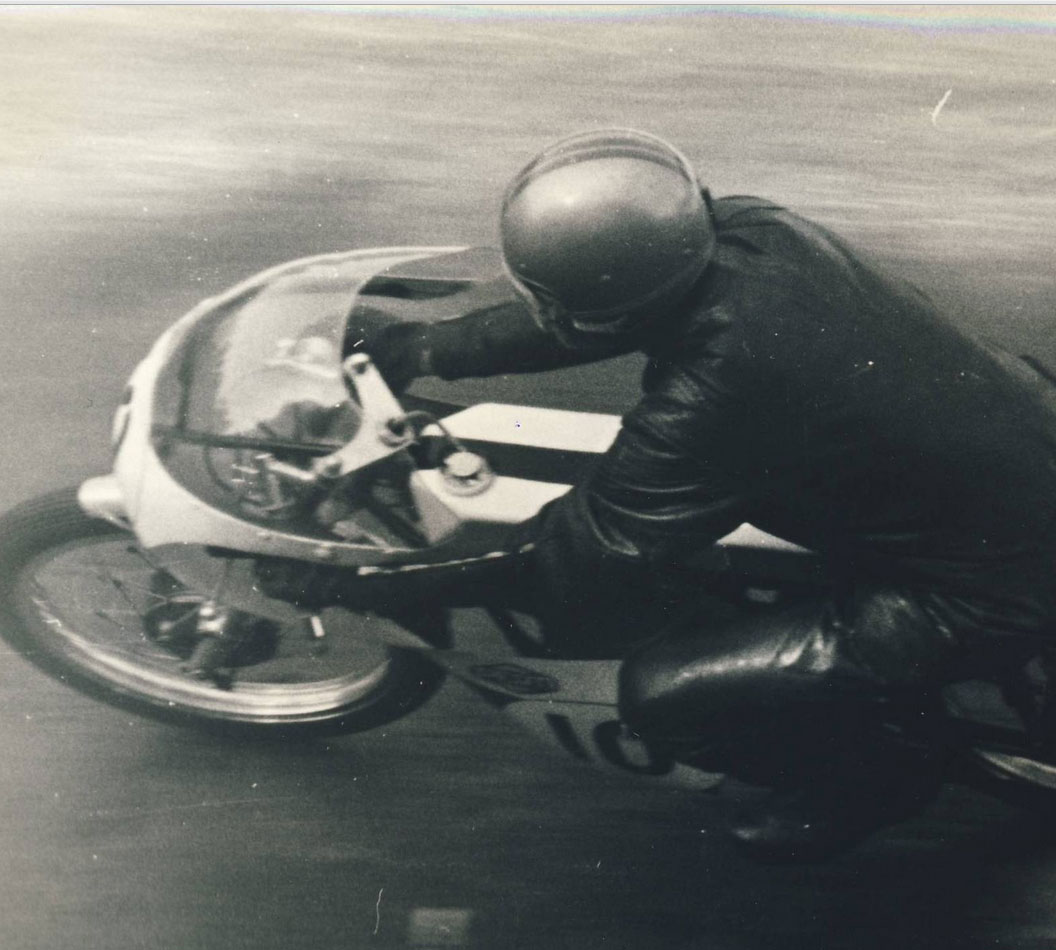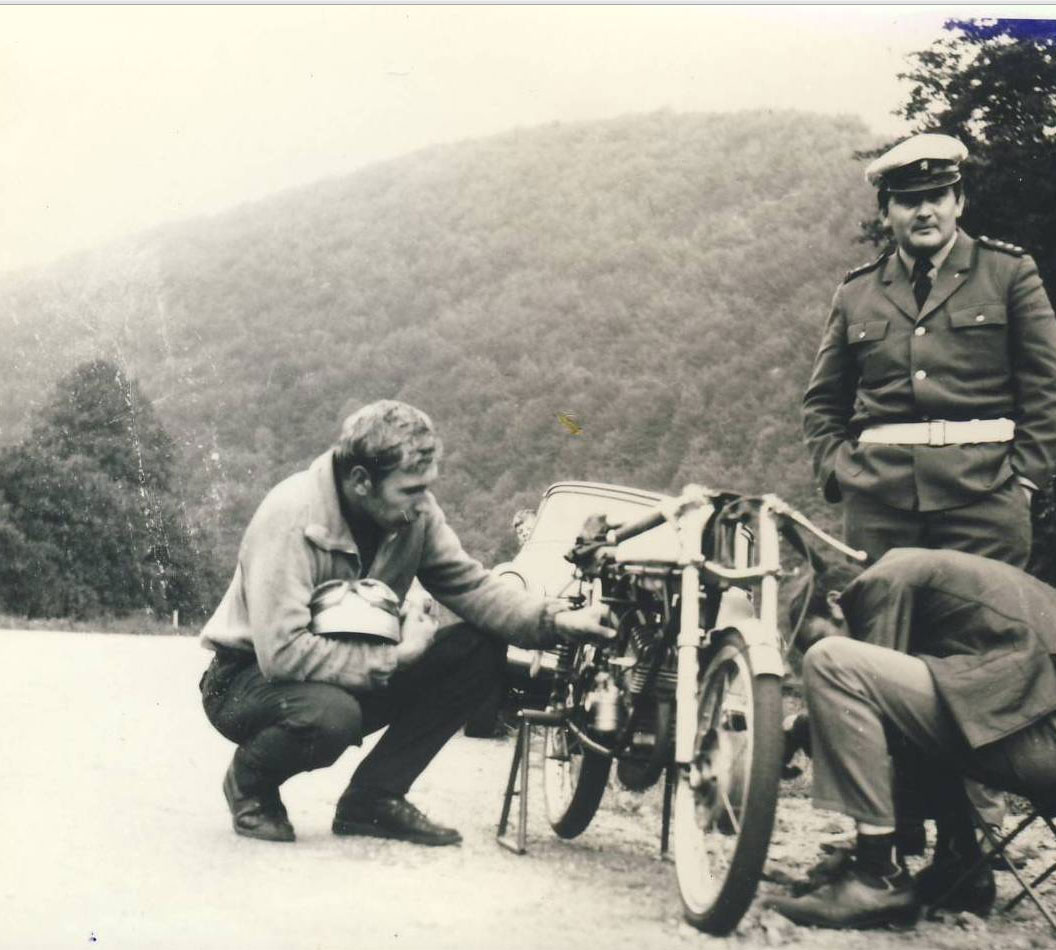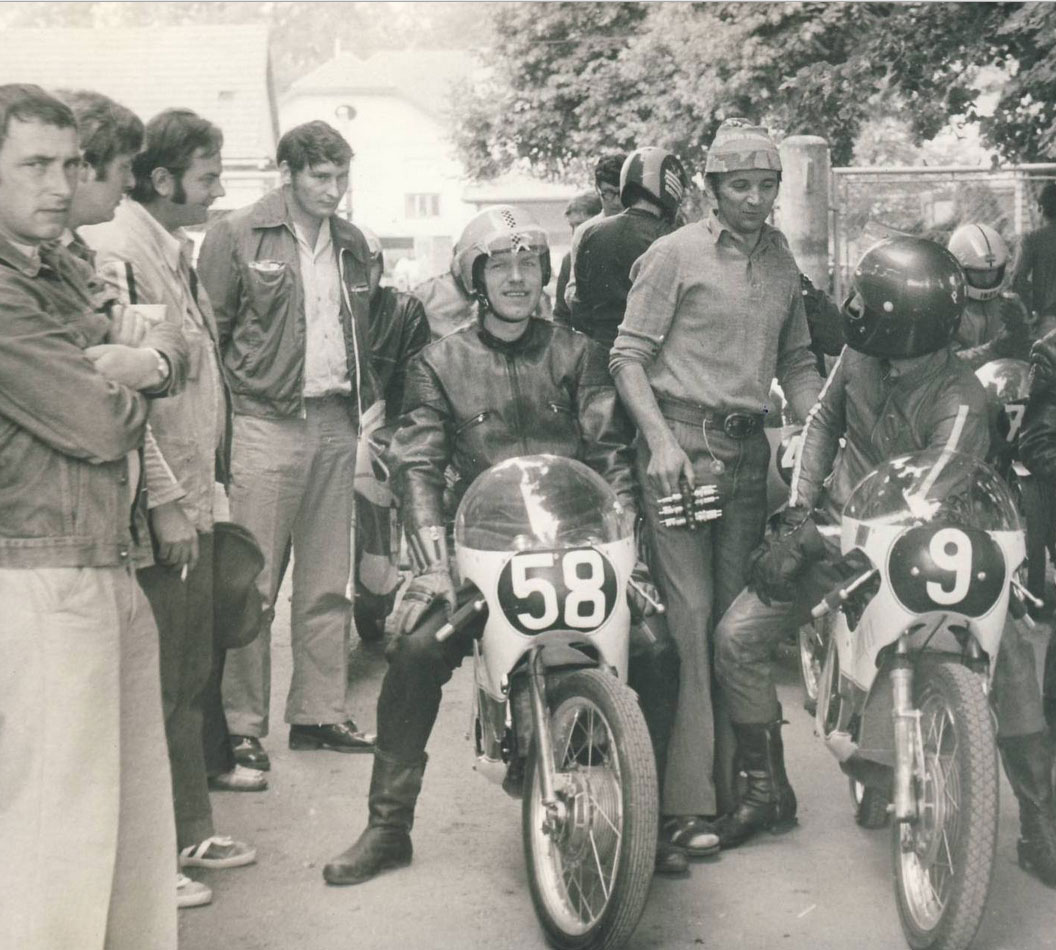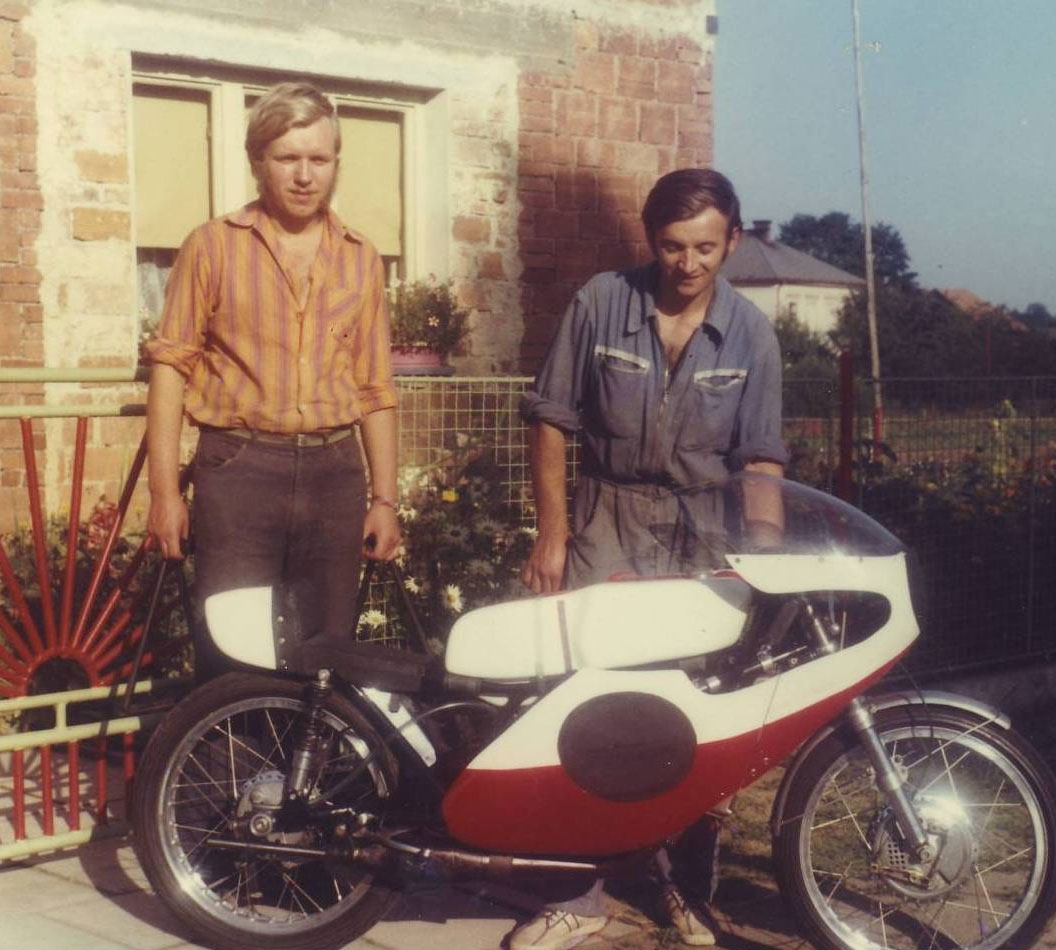Perti
Perti motorcycles are already almost a forgotten brand of the recent history. However, they are a firm part of the mosaic of the Czech construction skills and handicraft which is definitely worth commemorating.
The father and the soul of the projects was Pavel Petráček (born on 24 May 1942) from Hnátnice near Ústí nad Orlicí. The way to the results of his efforts was really difficult as he was a son of an entrepreneur with one employee, so his access to education was closed by the regime. Yet he did not give up. He went to a local company, Kovostav, to be apprenticed as a fitter, and later he graduated from a technical school. In 1961, before his military service, he adapted his first 175 cc motorcycle. Its reworked version was finished in 1963. In 1970, after the 175 cc motorcycle, Petráček started to build his next one - Perti 50 cc. At that time, he already had much experience because he was cooperating with Bohuslav Vaňous, a racer from Česká Třebová and a machine constructor at the VAB company.
His 50 cc motorcycle had an air-cooled engine of 40 × 39 mm, power of 7.3 kW (10 HP), intake distribution by a sleeve valve, and a 4-speed gearbox built into his own frame made of CrMb tubes. Perti 50 had rear dampers and drum brakes from Jawa 50, 19" tyres on Borrani wire rims, fibreglass body parts, and an 8 litre fuel tank of aluminium sheet metal. In 1971, Perti 50 underwent innovations. Alternatively, it had 6- or 7-speed transmission, battery-powered contact ignition, and later the original wet clutch was replaced by a dry one. New were also 18" wheels. In total, the Petráček's workshop completed 4 engines. With the arrival of the 80 cc class, the engine (48 × 44 mm) was rebuilt to liquid-cooling and got a new crankshaft. In October 1973, designs of a brand new Perti 125 started to appear on the table. The motorcycle's debut race was on the classic circuit in Hořice in 1974. The 125 cc motorcycle already had a liquid-cooled single-cylinder engine (56 × 50 mm) slanted by 30° up the horizontal level with the traditional sleeve valve distribution, a BVF 32 carburettor from Germany, a 6-speed transmission, and a dry clutch. All parts of the engine and the gearbox were self-manufactured, including the chassis of steel tubes, and drum brakes - double-toggle front brake and single-toggle rear brake. His friend Miroslav Felgr, who wanted to start racing, also got actively involved in manufacturing the new motorcycle and they agreed to make a motorcycle also for him at the same time. However, it is necessary to mention that many local companies, especially Kovostav, later renamed to Elitex, supported Petráček's activities. Also Perti 125 was gradually undergoing innovations. The original front steel fork was replaced by a dural one, the problems with the location of the crankshaft were the background for the development of a new aluminium block and the engine also had a few parts made of electron. The highlight of Petráček's 23-year-long activities in the area of fast motorcycles was Perti 250. Following a year-long development, Perti 250 was placed in the Czech championship series for the first time in 1980. The most powerful bike of the brand had a liquid-cooled twin-cylinder engine of 56 × 50 mm and 54 × 54 mm, power of 41.9 kW (57 k) at 11 500 RPM with the cylinder arrangement in line with axial suspension, sleeve valve distribution, and two Mikuni 34 carburettors. Six-speed transmission was used from Jawa, the bike had a dry clutch. Petráček built the engine into a frame of tubes of his own construction; the first rear suspension by Uni-track was later replaced by Cantilever. Perti 250 had a front single-disc Brembo brake of o 320 mm, and a rear one of o 230 mm, Vihur 18" five-spoke wheels, Michelin tyres, and a 15 litre fuel tank. One motorcycle was made. Racers on Perti were: Pavel Petráček, Miroslav Felgr, Bohuslav Vaňous, Pavel Zubatý, Zdeněk Rybka, Michal Placák, Martin Spilka, Vladimír Váňa, Petr Boušek, Pavel Kristek, and Radek and Josef Urbanec.
50 cm3
| 7.6.1970 | Gottwaldov | 10. (Bohuslav Vaňous) | MR (15.) |
| 23.8.1970 | Ostrava | 9. (Bohuslav Vaňous) | MR |
| 11.10.1970 | Velké Meziříčí | 12. (Bohuslav Vaňous) | MR |
| 6.6.1971 | Litomyšl | 9. (Petr Boušek) | MR (13.) |
| 6.9.1971 | Písek | 7. (Petr Boušek) | MR |
| 28.5.1972 | Hořice | 13. (Petr Boušek) | MR (17.) |
| 4.6.1972 | Nové Mesto n. Váhom | 12. (Petr Boušek) | MR |
| 8.10.1972 | Bratislava | 11. (Petr Boušek) | MR |
| 15.10.1972 | Nový Bor | 10. (Petr Boušek) | MR |
| 27.5.1973 | Hořice | 6. (Pavel Zubatý) | MR |
| 11.5.1975 | Dobruška | 8. (Vladimír Váně) | MR (14.) |
| 27.7.1975 | Žďár n. Sázavou | 9. (Vladimír Váně) | MR |
| 21.9.1975 | Velké Meziříčí | 9. (Vladimír Váně) | MR |
| 30.5.1976 | Hořice | 12. (Vladimír Váně) | MR (15.) |
| 4.7.1976 | Žďár n. Sázavou | 7. (Vladimír Váně) | MR |
| 18.7.1976 | Nové Mesto n. Váhom | 11. (Vladimír Váně) | MR |
| 26.9.1976 | Jindřichův Hradec | 11. (Vladimír Váně) | MR |
| 17.7.1977 | Nové Mesto n. Váhom | 13. (Vladimír Váně) | MR (15.) |
| 28.8.1977 | Žďár n. Sázavou | 19. (Vladimír Váně) | MR |
| 11.9.1977 | Jindřichův Hradec | 11. (Vladimír Váně) | MR |
| 9.10.1977 | Velké Meziříčí | 12. (Vladimír Váně) | MR |
| 16.10.1977 | Hradec Králové | 19. (Vladimír Váně) | MR |
125 cm3
| 9.5.1975 | Břeclav | 10. (Petr Boušek) | MR (12.) |
| 6.7.1975 | Nové Mesto n. Váhom | 8. (Petr Boušek) | MR |
| 27.7.1975 | Žďár n. Sáz. | 8. (Petr Boušek) | MR |
| 21.9.1975 | Velké Meziříčí | 12. (Petr Boušek) | MR |
| 25.4.1976 | Česká Třebová | 7. (Petr Boušek) | MR (9.) |
| 13.6.1976 | Litomyšl | 10. (Petr Boušek) | MR |
| 18.7.1976 | Nové Mesto n. Váhom | 9. (Petr Boušek) | MR |
| 19.9.1976 | Velké Meziříčí | 6. (Petr Boušek) | MR |
| 26.9.1976 | Jindřichův Hradec | 7. (Petr Boušek) | MR |
| 28.8.1977 | Žďár n. Sáz. | 15. (Petr Boušek) | MR (27.) |
250 cm3
| 9.9.1979 | Velké Meziříčí | 14. (Pavel Kristek) | MR (28.) |
| 14.10.1979 | Žďár nad Sáz. | 17. (Pavel Kristek) | MR |
| 6.7.1980 | Nové Mesto n. Váhom | 11. (Pavel Kristek) | MR (19.) |
| 27.7.1980 | Kopčany | 10. (Pavel Kristek) | MR |
| 31.8.1980 | Velké Meziříčí | 9. (Pavel Kristek) | MR |
AA – Alpe Adria
EP – Evropský pohár
IDM – Mistrovství Německa
MR – Mistrovství republiky
MS – mistrovství světa
ME – mistrovství Evropy
